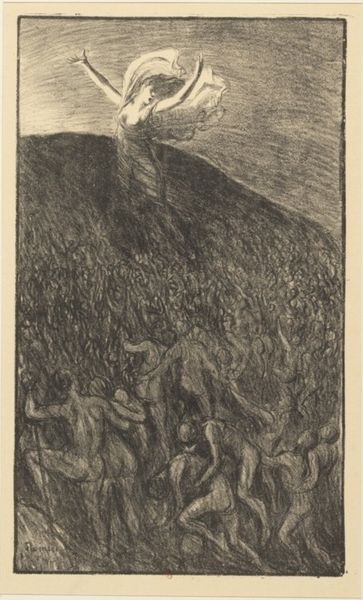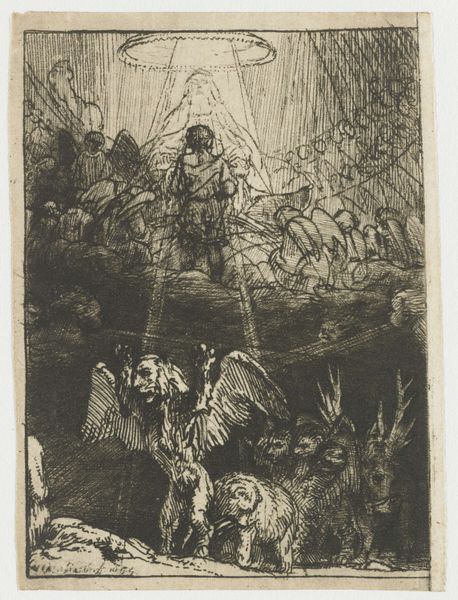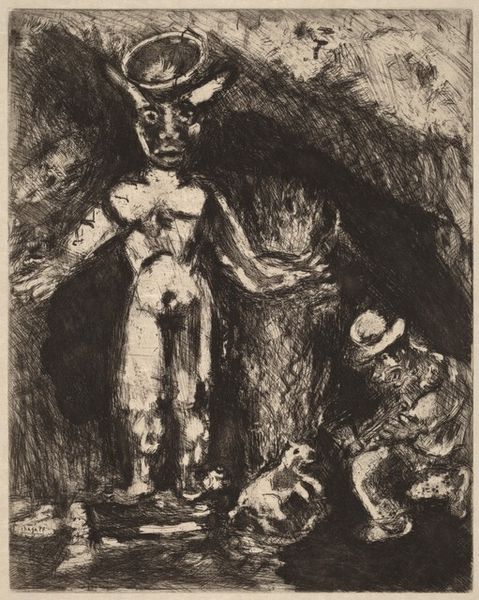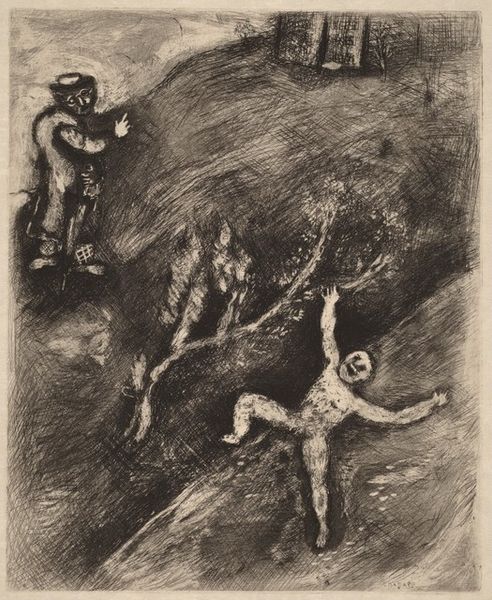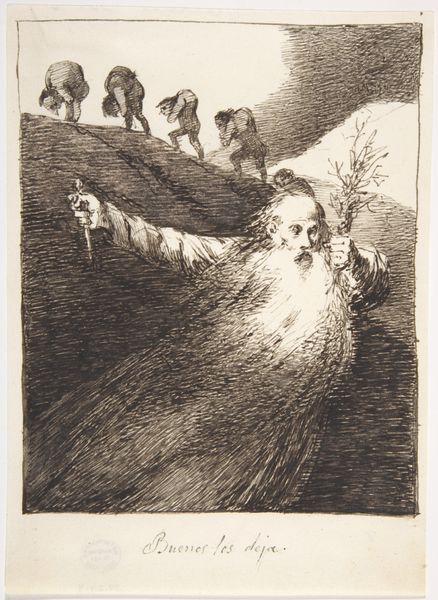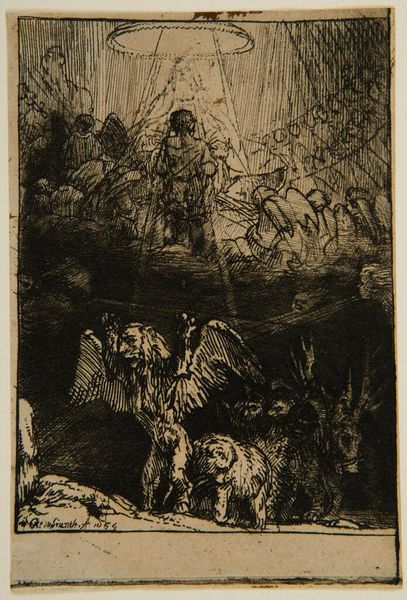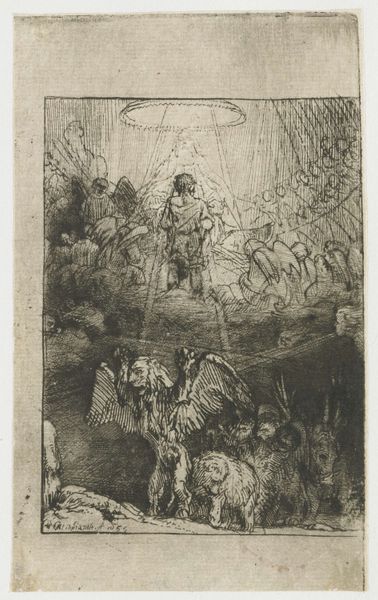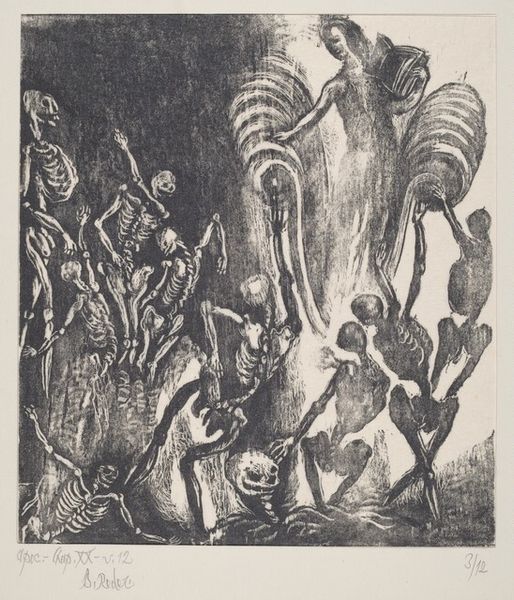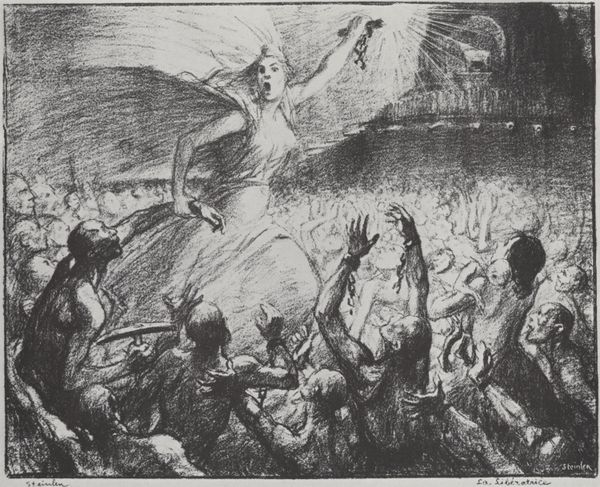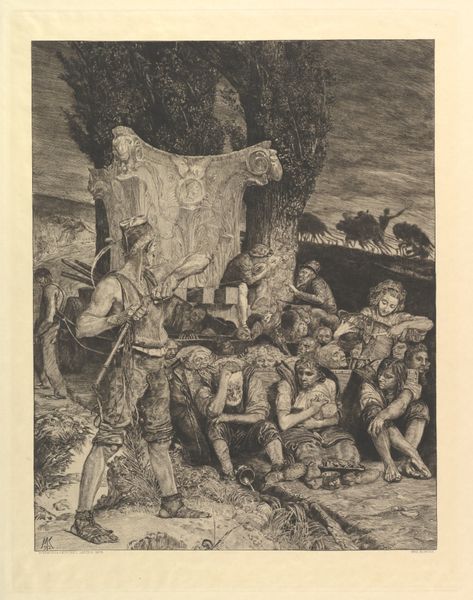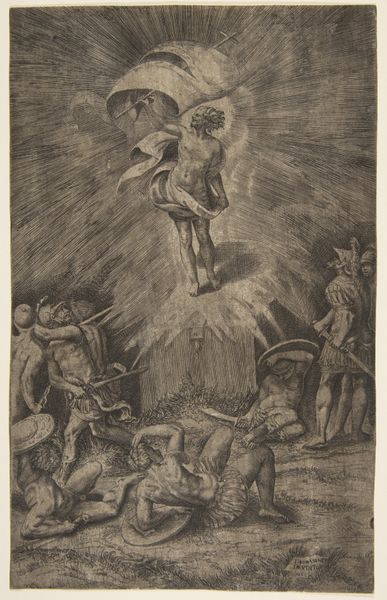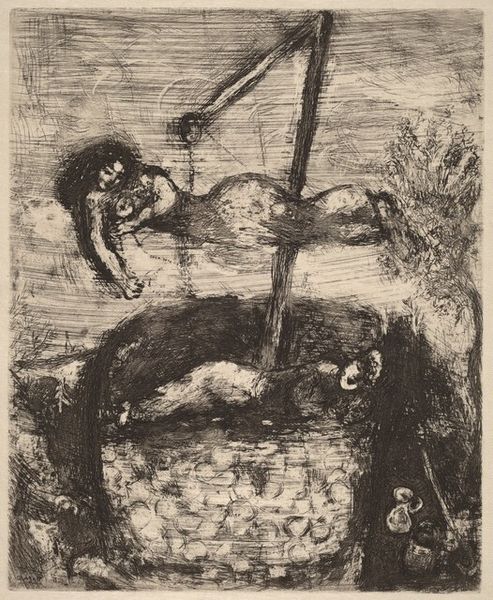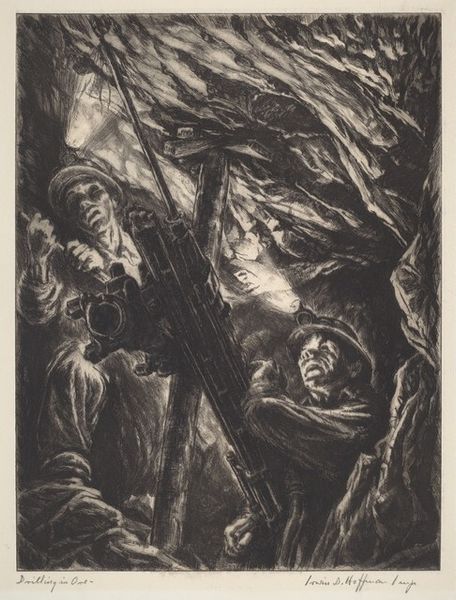
Copyright: National Gallery of Art: CC0 1.0
Editor: This etching, "The Fish and the Shepherd Who Played on the Flute" by Marc Chagall, dates from 1927-1930. The figures seem almost dreamlike, emerging from the heavily worked lines. What sort of narratives and cultural meanings do you find present in this piece? Curator: This print really captures Chagall's world. Remember that he's an artist deeply influenced by his upbringing in a Hasidic Jewish community in Vitebsk. Look at how the fish almost forms the shape of a river, or perhaps a bridge, connecting these figures. I think we see here the collision of the traditional rural world of the shepherd with the urban, potentially industrial imagery embedded within the fish form. It's almost a premonition of social shifts. Editor: That makes me think about the shepherd playing the flute; does that act represent something specific, a kind of refusal of industrialization maybe? Curator: Precisely. Consider the role of folk tales and the pastoral ideal within a rapidly changing European context. The flute music, perhaps, serves as a counterpoint to the anxieties of modernization. He is romanticizing a pre-industrialized society. How does this influence its reception by different audiences? Editor: It's a fascinating point – this yearning for an older, simpler world right on the cusp of immense upheaval. Maybe it's speaking to something timeless about societal transformation. Curator: It's interesting how Chagall juxtaposes these familiar archetypes within a changing society. The narrative becomes less about a specific story and more about collective memory and cultural identity. Editor: I hadn't considered that Chagall was commenting on larger issues facing society! I was focused on the dreamlike elements. Thank you!
Comments
No comments
Be the first to comment and join the conversation on the ultimate creative platform.
